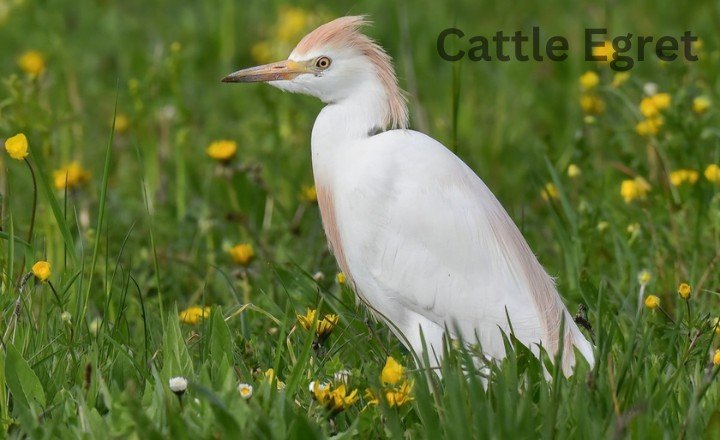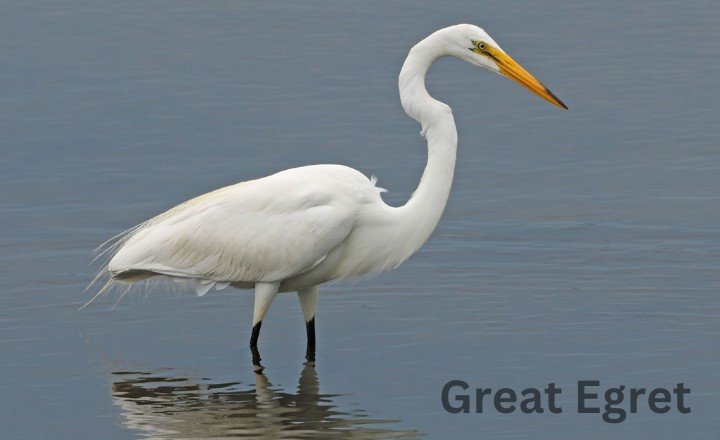7 White Birds in Florida With Long Beaks (With Pictures)
As a birdwatching enthusiast, I often find myself enchanted by Florida’s diverse avian life. Among the vibrant hues of tropical foliage and azure skies, a group of elegant White Birds captures my attention with their striking long beaks and graceful demeanor. These birds, gliding effortlessly above wetlands or wading in shallow waters, evoke a sense of wonder that draws me deeper into the intricate tapestry of nature.
This article will explore some of the white birds in Florida with long beaks, each species boasting unique characteristics and fascinating behaviors. Whether you’re an experienced birder or just starting on your avian adventure, these stunning creatures will undoubtedly inspire you to grab your binoculars and venture into the wild.
7 Florida Birds With Long Beaks (With Pictures)
Now we will be looking at some of the white birds that have long beaks. All species have their own characteristics and distinct features such as the beak shape.
Cattle Egret (Bubulcus ibis)
This bird is an intriguing species that captivates birdwatchers with its striking appearance and unique behaviors. They are often spotted in agricultural fields, this small white heron has adapted remarkably to human-altered landscapes, earning it the nickname the farmer’s ally.

What sets this bird apart from other wading birds is its habit of following livestock, like cattle or sheep, to catch insects disturbed by their movement. This symbiotic relationship not only benefits the egret with a reliable food source but also aids farmers by helping control pests.
These birds have a look very familiar to the Birds with Mohawak. They have a mohawk-looking fur above their head but it is not mohawk.
Reddish Egret (Egretta rufescens) – White Morph
This white morph is a stunning, albeit elusive, manifestation of this coastal bird. Unlike its more common reddish counterpart, the white morph boasts striking all-white plumage that can mislead even seasoned birdwatchers into mistaking it for other egret species.
What sets the white morph apart not just visually is its fascinating hunting technique. With a unique blend of joyful flapping and graceful stillness, it employs an intriguing strategy to catch fish by waving its wings to create shadows over the water a dance as elegant as it is effective.

They have off-blackish fur and people sometimes confuse them with the Black Birds. But they also have this reddish-looking fur on their neck which very much sets them apart from other birds in appearance.
“The Reddish Egret’s White Morph is a true testament to the beauty and diversity of nature. Its long beak and distinct white plumage make it a standout among wading birds.” – Wildlife Enthusiast
Little Blue Heron (Egretta caerulea) – Juvenile
This bird presents a striking transition from their more unassuming, mottled brown plumage to the vivid slate blue of adulthood. This transformation is not just aesthetic but it signifies the bird’s growing sophistication in hunting techniques and social interactions within wetlands. As they forage in shallow waters for small fish, crustaceans, and insects, these young herons showcase an impressive agility that belies their size.

The coloration of juvenile little blue herons serves a dual purpose. While providing necessary camouflage against predators during their vulnerable phase, it also plays a crucial role in social dynamics among avian communities.
“The Little Blue Heron’s transformation from white to blue is a stunning example of nature’s wonder. Witnessing this unique adaptation in person is truly a remarkable experience.” – Birdwatcher Jane Smith
American White Ibis (Eudocimus albus)
With its striking white plumage and long, curved bill, this is more than just a visually captivating bird. It plays an essential role in the ecosystems of wetlands and marshes. They are found in parts of North America, Central America, and the Caribbean, these birds serve as indicators of environmental health. Their populations are sensitive to changes in water quality and habitat availability, making them crucial for monitoring ecosystem integrity.

These birds are social creatures that thrive in large colonies. These communities not only provide safety in numbers but also facilitate learning through social interaction young ibises often follow older birds to learn foraging techniques
Their appearance is very much familiar with the Small Bird Flamingo. This one is quite larger than the Flamingo, but despite that many people get confused over these two.
Great Egret (Ardea alba)
These birds captivate both casual observers and avid bird watchers with their striking elegance and poised demeanor. They are frequently found in wetlands, marshes, and shallow waters across the world, this large wading bird is not only a visual spectacle but also an ecological powerhouse.

Breeding adults sport long plumes during the mating season, which were historically hunted for fashion accessories; this led to significant conservation efforts that ultimately heralded a newfound appreciation for their preservation.
“The Great Egret is a stunning example of nature’s beauty, with its long beak and graceful movements. Observing these majestic birds in their natural habitat is a truly awe-inspiring experience.” – Wildlife Enthusiast
Masked Booby (Sula dactylatra)
This is a fascinating seabird that captivates ornithologists and birdwatchers alike with its striking appearance and intriguing behaviors. Notably adorned with a bold black cap and piercing turquoise eyes, this species stands out among its feathered peers. They are found predominantly on tropical islands, these birds are masters of aerial acrobatics, effortlessly diving from heights of up to 30 meters in pursuit of fish.

The breeding habits of the Masked Booby offer a unique glimpse into their social structure. These birds often form colonies on remote coastal cliffs or sandy shores where they engage in complex courtship displays that include synchronized diving and elaborate vocalizations.
This bird has some of its distinctive features.
- Sleek white plumage.
- Long and powerful beak.
- They can adapt themselves to aquatic life.
- They have a wingspan that can grow up to several inches.
- Large size.
“The Masked Booby’s long beak enables it to catch fish and other marine creatures with precision and ease.” – Ornithologist Dr. Jane Smith
Whooping Crane (Grus americana)
This is a majestic embodiment of grace and resilience and stands as one of North America’s rarest bird species. With its striking white plumage and long legs, this iconic avian marvel is not only a symbol of beauty but also an emblem of conservation success. Once teetering on the brink of extinction in the early 20th century plummeting to fewer than two dozen individuals the Whooping Crane has inspired dedicated efforts for revival.

Challenges continue to loom over their future survival as their habitat loss due to urban development and agricultural expansion presents significant threats to these elegant cranes’ migratory routes between Texas and Canada. Climate change poses a growing concern by altering wetland ecosystems crucial for their breeding and feeding activities.
‘White Birds in Florida With Long Beaks’ Conclusion
The Florida birds with long beaks such as the Great Egret and the Roseate Spoonbill, play crucial roles in their ecosystems. Their unique adaptations not only facilitate their feeding habits but also contribute to the overall health of wetland environments. Observing these elegant creatures can enhance our appreciation for Florida’s rich biodiversity and the importance of conservation efforts. By protecting their habitats, we ensure that future generations can enjoy witnessing these stunning birds in their natural surroundings.
FAQs
What is a Tall White Bird with a Long Beak?
The Great Egrets scientifically known as Adrea alba, are tall white birds that also have a long beak. Their whole body is often white and they have S-curved necks.
What is a White Bird with a Long Skinny Beak?
The Little Egret scientifically known as Egretta garzetta, has a skinny beak. They have long black-colored legs and their body is white. The color of their beak is slender black.
What is a White Bird With a Massive Beak?
The White Stork scientifically known as Ciconia ciconia, is a large bird that belongs to the Strok family. They have quite a big beak. They have red long legs, and the back part of their body is blackish while the front one is often white.
What Kind of Bird has a Long Beak on the Beach?
The Long-Build Curlew is the largest shorebird found in North America. They have an impossibly long and curved bill. It’s a graceful creature.







